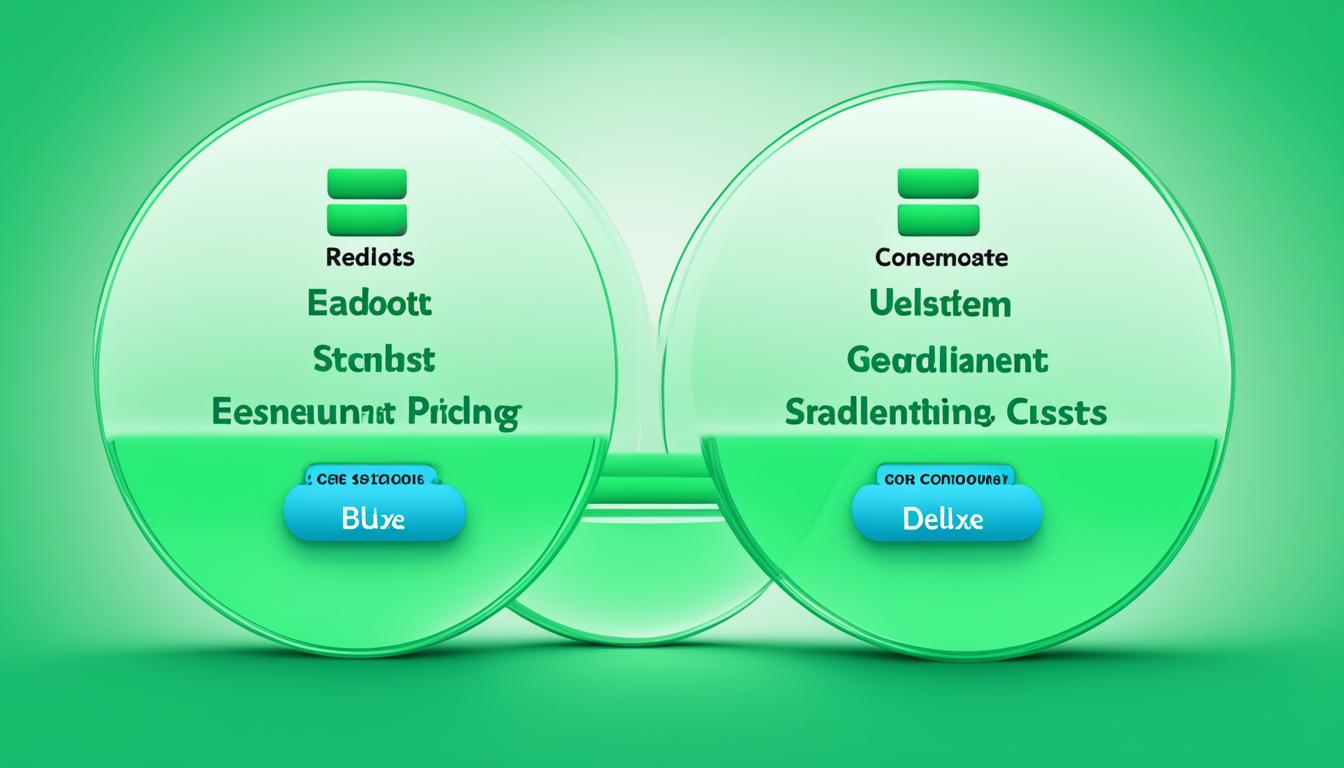How to launch e-ommerce company?
Did you know that the e-commerce industry in Canada is estimated to reach a value of CAD 64.3 billion by 2023? This staggering statistic highlights the tremendous growth and potential that lies within the realm of online retail. If you’ve been considering starting your own e-commerce business, now is the perfect time to embark on this exciting entrepreneurial journey.
In this comprehensive guide, I will walk you through the step-by-step process of launching an e-commerce company. From finding profitable products to setting up your online store and implementing effective marketing strategies, I will provide you with the knowledge and tools you need to succeed in the dynamic digital marketplace.
So, if you’re ready to turn your passion into a profitable online business, let’s dive in!
Key Takeaways:
- Tap into the CAD 64.3 billion e-commerce industry in Canada by launching your own online store.
- Follow a step-by-step process to find profitable products, set up your online store, and implement effective marketing strategies.
- Embrace the potential for growth and success in the dynamic digital marketplace.
- Start your entrepreneurial journey today and turn your passion into a profitable online business.
- Stay tuned for the next sections where we delve into finding product opportunities, setting up your online store, implementing sales and marketing strategies, and ensuring long-term success.
Finding Profitable Product Opportunities and Choosing What to Sell
When starting an e-commerce business, one of the first crucial steps is to identify profitable product opportunities and make informed decisions about what to sell. This involves thorough product research, evaluation of market trends, and validating your ideas to ensure a successful venture.
Product Research Strategies
Conducting effective product research is essential for finding opportunities that align with your target audience’s needs and preferences. Here are some strategies to consider:
- Finding Trending Products: Stay updated on the latest industry trends and consumer demands by following online marketplaces, social media platforms, and niche-specific blogs.
- Exploring Different Sourcing Methods: Research various product sourcing methods such as dropshipping, wholesale, or manufacturing partnerships. Each method has its own pros and cons, so it’s important to evaluate which aligns best with your business model.
- Validating Your Product Ideas: Before committing to a product, validate its potential success by conducting market research, analyzing competitor offerings, and seeking feedback from potential customers.
- Utilizing Product Research Tools: Leverage the power of product research tools and platforms that provide insights on product demand, competition, and customer reviews. Examples include Jungle Scout, Helium 10, and Viral Launch.
By employing these product research strategies, you can identify lucrative opportunities and choose products that have high sales potential.
Product Sourcing Methods
Once you have identified promising product opportunities, it’s essential to determine the most suitable sourcing method for your business. Here are some common product sourcing methods:
| Product Sourcing Method | Pros | Cons |
|---|---|---|
| Dropshipping |
|
|
| Wholesale |
|
|
| Manufacturing |
|
|
By carefully evaluating these sourcing methods based on your business goals, financial capabilities, and scalability plans, you can make an informed decision that suits your unique requirements.
Once you have determined the product opportunities and sourcing method, you can move forward with setting up your online store and building a brand presence that resonates with your target customers.
Setting Up Your Online Store and Building Your Brand
Once you have chosen your products, it’s time to set up your online store and build a strong brand presence. In this section, I will guide you through the key steps involved in setting up your e-commerce website, including choosing an e-commerce website builder, customizing your site, designing a memorable logo, and optimizing your website for search engines. We will also explore different sales channels to expand your reach and help you establish your brand in the competitive e-commerce landscape.
To start, you need to select an e-commerce website builder that suits your needs and budget. There are several options available, such as Shopify, WooCommerce, and BigCommerce, each offering different features and customization capabilities. Consider factors like ease of use, design templates, payment gateways, and integration options when making your choice.
Once you have chosen a website builder, it’s time to customize your online store. This includes selecting a visually appealing theme that reflects your brand’s identity and values. Your website’s design should be user-friendly, intuitive, and responsive across different devices. Make sure to optimize it for easy navigation and seamless browsing, ensuring a positive user experience for your potential customers.
In addition to the website design, having a memorable logo is essential for building brand recognition. Your logo represents your business and should be unique, visually appealing, and easily recognizable. If you don’t have design skills, you can hire a professional designer or use online logo design tools to create a logo that aligns with your brand’s image and values.
Search engine optimization (SEO) is crucial for driving organic traffic to your online store. Optimize your website’s content, meta tags, and URLs with relevant keywords related to your products and brand. Implementing SEO practices will improve your search engine rankings and increase visibility to potential customers searching for products like yours.
Expanding your sales channels is another effective strategy for building your brand and reaching a wider customer base. Consider selling your products on popular online marketplaces like Amazon, eBay, or Walmart Marketplace. These platforms offer access to millions of potential customers and can help you increase sales and brand exposure.
As you set up your online store and build your brand, remember that consistency is key. Ensure that your brand’s messaging, visuals, and customer experience remain consistent across all touchpoints, including your website, social media profiles, packaging, and customer support.
In the next section, we’ll dive into implementing effective sales and marketing strategies to drive traffic and boost sales for your e-commerce business.

Implementing Effective Sales and Marketing Strategies
To drive sales and grow your e-commerce business, it is crucial to implement effective sales and marketing strategies. In this section, I will guide you through various tactics to help you reach your target audience, promote your products, and maximize sales.
Choosing the Right Shipping Strategy
When it comes to shipping strategy, it is essential to consider factors such as cost, reliability, and customer experience. Take into account the size and weight of your products, as well as your target market’s location. Whether you opt for in-house fulfillment, outsourced shipping, or a combination of both, make sure to choose a solution that aligns with your business goals and budget.
Setting Sales and Marketing Goals
Setting clear and measurable sales and marketing goals is crucial for tracking your progress and driving success. Identify key performance indicators (KPIs) that align with your overall business objectives, such as revenue targets, customer acquisition rates, and conversion rates. Regularly analyze your performance against these goals and adjust your strategies accordingly.
Acquiring Your First Customers
In the early stages of your e-commerce business, acquiring your first customers is a priority. Start by leveraging your existing network and reaching out to friends, family, and colleagues to spread the word about your store. Implement customer acquisition tactics such as referral programs, discounts for first-time buyers, and collaborations with influencers or bloggers in your niche.
Marketing Your Store
Effective marketing is crucial for increasing your store’s visibility and attracting potential customers. Utilize social media marketing to engage with your target audience and showcase your products. Develop a content strategy that includes compelling product descriptions, captivating imagery, and informative blog posts to educate and inspire your audience. Consider implementing paid ads on platforms such as Google Ads or Facebook Ads to reach a wider audience and generate targeted traffic to your store.
Optimizing for Conversion Rates
To maximize sales, it is important to optimize your website for higher conversion rates. Ensure your website is user-friendly, with clear navigation, intuitive checkout processes, and persuasive call-to-action buttons. Implement conversion rate optimization (CRO) techniques such as A/B testing, heatmap analysis, and user feedback surveys to identify areas for improvement and make data-driven optimizations.

| Marketing Tactic | Benefits |
|---|---|
| Social Media Marketing | Increases brand awareness, fosters engagement, and drives traffic to your store |
| Paid Ads | Allows targeted advertising, reaching a specific audience interested in your products |
| Influencer Marketing | Builds credibility and trust with your target audience through endorsements from influencers |
| Conversion Rate Optimization (CRO) | Improves website performance and increases the percentage of visitors who make a purchase |
By implementing these sales and marketing strategies, you can effectively promote your e-commerce store, attract customers, and drive sales. Remember to regularly analyze your performance, adapt your strategies, and stay ahead in the competitive e-commerce landscape.
Launching Your E-commerce Business and Ensuring Long-term Success
Now that your e-commerce business is ready to launch, it’s time to focus on ensuring long-term success. Building a successful online store requires a strategic approach that includes customer acquisition, retention, and scaling your business for growth.
Acquiring your first customers is crucial to kickstarting your business. By implementing effective marketing strategies, such as social media marketing and paid ads, you can reach your target audience and generate initial buzz around your products. Remember to optimize your website for higher conversion rates to turn visitors into loyal customers.
Customer retention is the key to sustaining your business in the long run. Providing exceptional customer service, offering personalized shopping experiences, and engaging with your customers through email marketing or loyalty programs can help foster a strong and loyal customer base. Additionally, customer reviews and testimonials play a vital role in building trust and credibility, so encourage your customers to share their feedback.
As your business gains momentum, it’s essential to scale your operations to meet increasing demands. Continuously monitor and analyze e-commerce metrics like conversion rate, average order value, and customer lifetime value. This data will guide you in making informed decisions, optimizing your website, and identifying opportunities for growth. Ongoing optimization is crucial in staying competitive in the ever-evolving digital marketplace.
FAQ
How do I find profitable product opportunities for my e-commerce business?
What are the key steps in setting up an online store for my e-commerce business?
What sales and marketing strategies should I implement to grow my e-commerce business?
How do I officially launch my e-commerce business and ensure long-term success?
- How Strategic SEO Drove Growth for a CPAP E-commerce Brand - July 24, 2025
- Top 3 SEO Companies in Toronto: An Analytical Comparison - July 23, 2025
- SEO for Entry Door Services - April 24, 2025





















Post Comment
You must be logged in to post a comment.